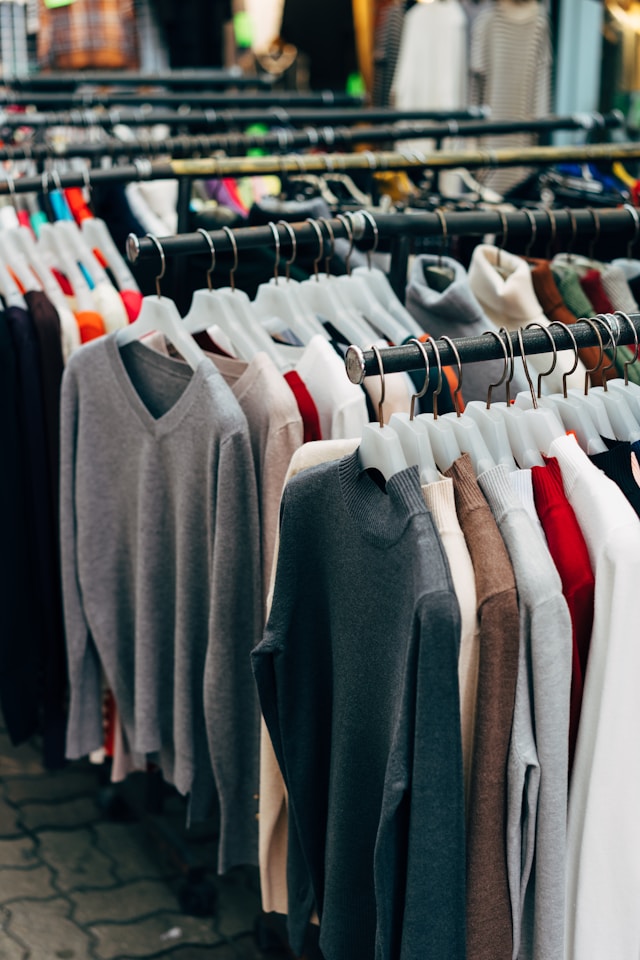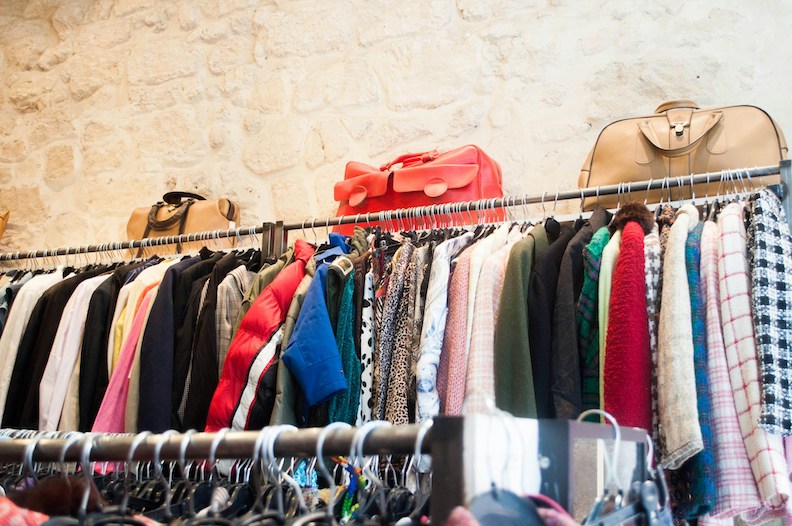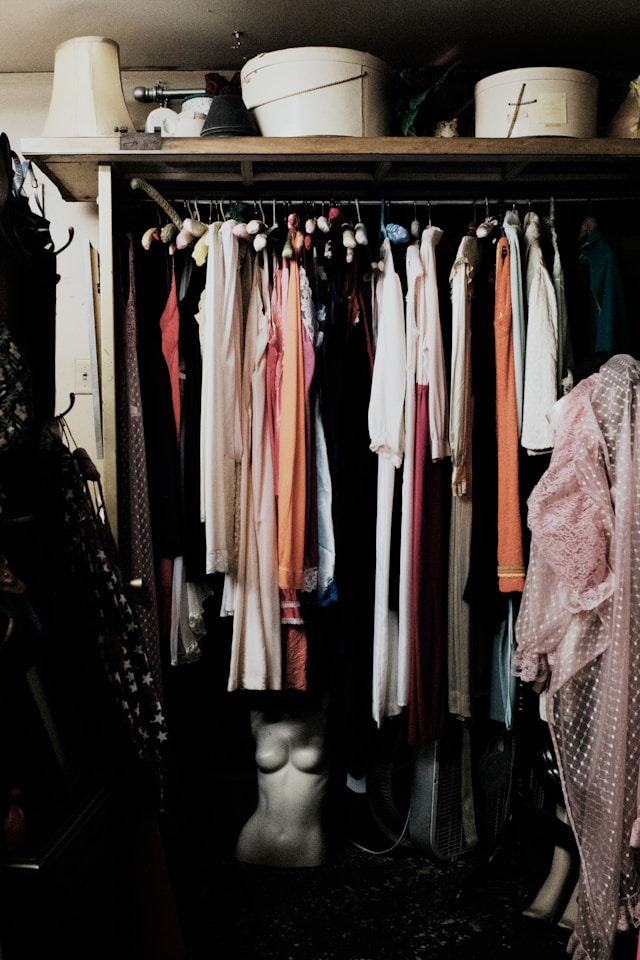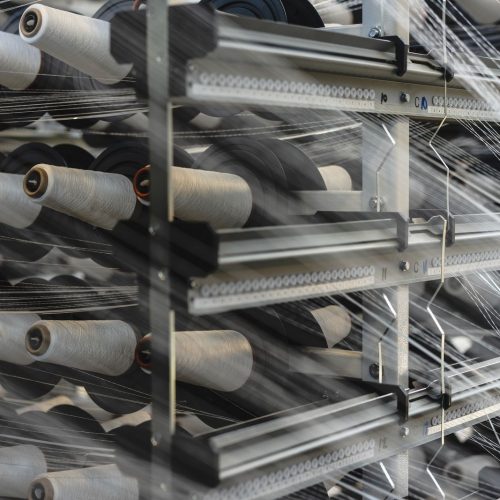The New Fast Fashion | Must We Be Wary Of Thrifting?
The Golden Age of sustainable shopping is reportedly among us – thrifted fashion has taken hold of the industry. In a shift pioneered by Gen Zers, the secondhand market has nearly doubled in value over the last few years, promoting a less wasteful, and more circular fashion economy in the midst. But is thrifting really as sustainable as we think it is? Here, we weigh the environmental and social impacts of thrifting’s illustrious ascent.
To receive the Luxiders newsletter, sign up here.
The 2020’s have readily become the age of thrifted fashion. Popularized by social media trends and influencer engagements, the global secondhand apparel market has grown tremendously over the past few years. Earthday.org records indicate that, from 2021 to 2023, the value of the secondhand market rose from $138 to $211 billion – nearly doubling. By the year 2027, it is estimated that the thrifting economy will reach upwards of $351 billion; by 2030, it is expected to have a market share double that of fast fashion.
As thrift continues its trajectory towards becoming the nation’s preferred method of shopping, it is important to evaluate the method as a whole – the finer grain impacts on environmental, social, and economic well being. Of course, thrifting has its perks, partially why it was so attractive in the first place.

© Markus Winkler via Unsplash
COST-EFFECTIVE
Thrifting is often viewed as a budget-friendly alternative to traditional retail shopping. CouponFlow recently published a report citing that thrift store shoppers save an average of $1,760 per year by purchasing second hand goods – funds which can instead be allocated towards more essential expenses. Naturally, pre-loved items tend to be much less expensive than brand new clothing, with prices rivaled only by mass-produced clothing from faster fashion companies.
Contrary to popular opinion, secondhand shopping does not require one compromise on quality of purchased pieces. Many thrifted items are only gently used, and it is relatively easy to find durable, high-quality, and even designer pieces at second hand or consignment stores. Thrifting, then, is a great way for consumers to bargain shop while consciously rejecting fast fashion models, making it possible to shop economically without sacrificing the integrity of your clothing, style, or self.
NATURE OF PRODUCTS
There is also an excited element to secondhand shopping – something people like to call the “thrill of the hunt.” Unlike traditional retail stores which carry many of the same designs, secondhand shops usually have one-off items, offering a variety of unique vintage and trendy pieces that you won’t necessarily find in these more mainstream stores.
Due to the fast turnover rate and constant donations, inventory at second hand shops is ever changing, and there is no limit to the imaginative power bound by these clothes. Thrift stores allow people the space and resources to experiment with their own personal style, offering them a suitable alternative to blindly following the trends set before them in stores and online.
SUSTAINABLE
In an era stained by mass-production and environmental negligence, it can often feel hard or downright impossible to make a considerable impact. Thrift stores offer consumers a sustainable way to shop in a not-so-sustainable fashion economy, allowing consumers to control where their clothing actually comes from – more than a momentary trend, thrifting is a conscious choice.
Secondhand shopping extends the lifestyle of pre-existing products, rather than encouraging the generation of new ones altogether. Manufacturing clothing and other apparel is an exhaustive process, rife with natural resource degradation, chemical waste, and greenhouse gas emissions. By pledging solidarity to secondhand shops, consumers are not supporting the demand for new goods, therefore rejecting mass-productive processes (if we know anything about the current state of our market it is that demand directly informs supply).
Clothing that ends up for resale in thrift stores is generally clothing that previous owners didn’t want, and which would have likely been discarded otherwise. Thrift stores, in this way, help to lessen environmental waste, giving unwanted clothing a second life and preventing clothing from ending up in landfills. Secondhand shopping promotes a circular fashion economy where new life is breathed into old clothing continuously.

© Noemie Roussel- via Unsplash
Thrifting might seem the most obvious choice when it comes to a more economic, unique, and all around sustainable approach to shopping. Besides affordability and creative opportunity, thrifting provides consumers with a viable alternative to mass-produced clothing, allowing them to purchase freely and minimize their own environmental footprint in the process.
The discourse surrounding the longer-term impacts of thrift culture, however, runs deeper than just these surface level fundamentals. There are many, lesser-talked about, impacts on environmental health and general welfare that must be addressed, as well, in order to paint a complete picture of thrifting and its role in the future sustainability of fashion.
OVERCONSUMPTION
Despite the overt differences in the nature of either, parallels also exist between thrifted and faster fashion modes of shopping. For example, both seem to promote unhealthy consumption habits among shoppers. All-time low prices in thrift stores – similar to those of fast fashion companies like Temu and Shein – often encourage people to buy clothing they wouldn’t otherwise readily buy, promoting a continued chain of overconsumption –- and, in the case of fast fashion, overproduction. So, while the consumption method has shifted to a more sustainable alternative, the philosophy remains the same – buy as many products for as little as possible. In this sense, thrifting might likely be a short-term solution to the fashion industry’s environmental impact, but its viability in the longer-term remains unclear.
Influencer culture plays a role in overall consumption mentalities, as well. A subculture of TikTok – coined by users as “ThriftTok” – has emerged as a space for influencers to unveil their massive thrifted “hauls,” casually running through their piles of freshly purchased secondhand goods. While some gravitate towards thrifting as a conscious effort to reduce their environmental footprint, others are simply following an influencer promoted “trend.” Since the market is fragile and trends can quickly cycle out of fashion, the position of thrift as a lead method of shopping is far from solidified.
GENTRIFICATION OF THRIFT
From its humble origins as a necessary institution for the lesser fortunate, thrifting has evolved into a multi billion dollar enterprise embraced globally – especially among consumers who can afford to shop elsewhere. The continuously growing demand for thrifted goods has had a clear impact on the industry – one which has continued to derail thrifting from its original intent. In combination with upsell culture – where consumers will purchase apparel from thrift stores and resell it at an elevated price point –, the popularization of second hand shops has been met with raised in-store prices. While still often lower than mainstream retail prices, these escalations make thrifting increasingly inaccessible to the very lower income communities it intended to serve in the first place. In this way, thrift has become yet another of the countless examples of modern day gentrification.
The movement towards thrifted fashion – fueled, in part, to counter the wastefulness of faster fashion companies – threatens to offset its very purpose. Since lower income communities cannot necessarily keep up with the rising prices of thrift, they are being driven back to the same fast-fashion institutions we are collectively trying to avoid.

© Adrienne Leonard via Unsplash
While shopping secondhand may appear an ethical no-brainer, the true reality of thrift as a cultural movement is much more complicated and requires the appropriate discourse. The many unintended consequences that have coincided with the rise of thrifting make us question its legitimacy as the future of sustainable shopping. It seems likely that, perhaps even more so than a direct modal change, what fashion needs is an entirely new framework. Currently, the fashion industry is one that presides itself on hyper-consumerism fixations – an accepted mentality that we must try and do away with. It is clear more mindful approaches must be taken to the art of thrift – and shopping – more generally.
Highlight Image:
@ Unsplash
+ Words:
Tori Palone
Luxiders Magazine




